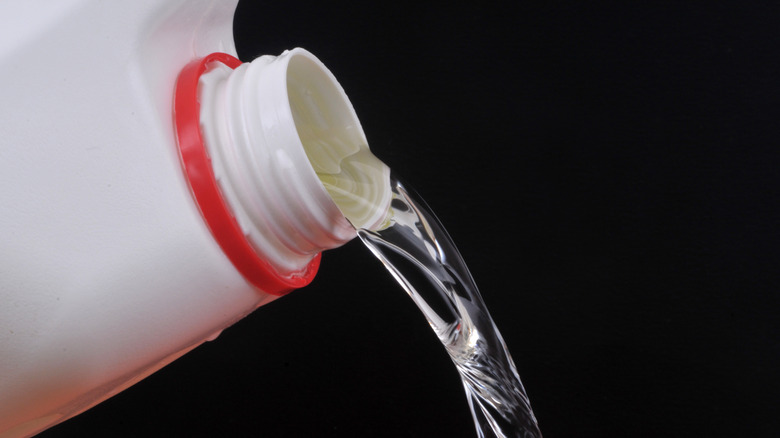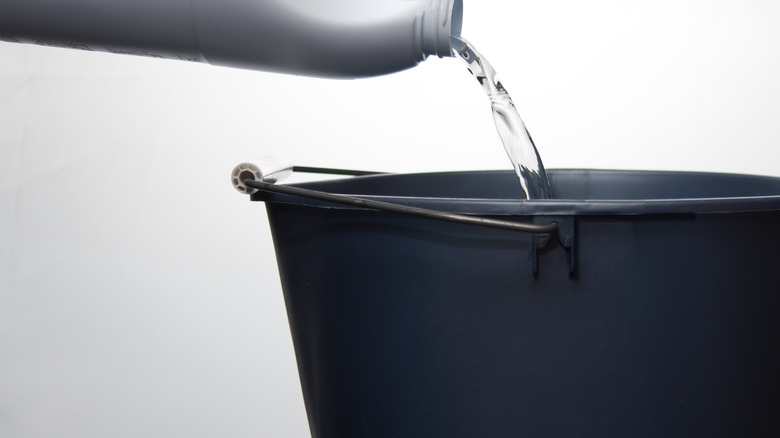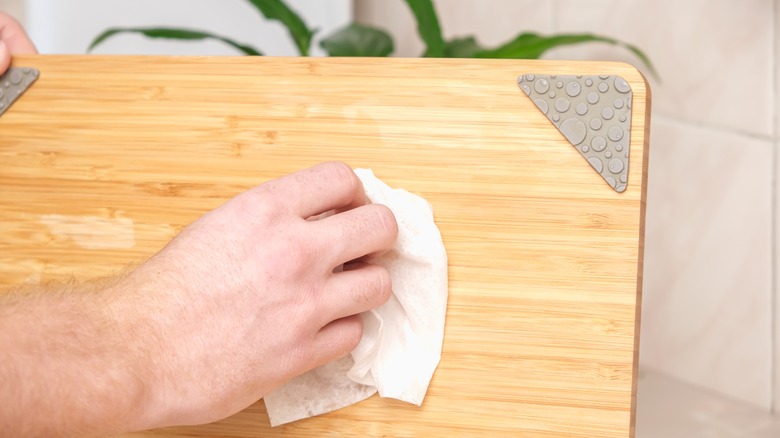Crucial Precautions To Take Before Cleaning Your Home With Bleach
Bleach is effective against bacteria, mold, and mildew, which makes it undoubtedly one of the most powerful disinfecting agents you can find. It's great for removing laundry stains and for sanitizing, but it's a powerful chemical that comes with its own set of precautions, which means you must be careful when using it. The Stanford University Department of Environmental Health and Safety explains that bleach is an oxidative and corrosive substance that can cause discomfort, irritation, and even acute distress if exposed to the skin, respiratory tract, or eyes. It's important to use caution when dealing with bleach in order to avoid any adverse effects it may have on your body and to seek immediate medical attention if necessary.
When using bleach to disinfect any surface, it is essential that you use it safely by wearing rubber gloves along with protective eyewear. Not only do you have to avoid getting it on your skin and clothing, but you should also be mindful of the harsh fumes. Ventilating the room properly by opening up multiple windows will help ensure nobody inhales toxic substances released during application. Beyond the basics, there are some other precautions you can take.
Tips for using bleach safely and effectively
To disinfect surfaces around your home, you don't have to use bleach at full strength. Mix ⅓ cup of household bleach with one gallon of water in a bucket and give it a good swish — just remember not to use extremely hot water, which could release chlorine gas when mixed with the disinfectant.
To ensure that your diluted bleach solution delivers the best results, it is important to apply it properly. Avoid corrosion of metal parts in ordinary spray bottles and potentially reducing the strength of its sterilizing power by skipping bottles altogether — opt for a sponge instead! Dip one into your mixture before wringing out any excess liquid, and then use it to clean surfaces as usual. Finally, leave it on for 10 minutes prior to rinsing or wiping with paper towels thereafter. If you do decide to opt for a spray bottle, make sure it's a chemically resistant one.
You might be tempted to mix bleach with other household cleaning chemicals, but doing so is dangerous. The only ingredient you should mix with is water. Attempting to combine chlorine-based cleaners such as bleach and ammonia can create hazardous toxins that cause chest pain, shortness of breath, or even pneumonia if inhaled. Similarly, combining bleaching agents like vinegar or rubbing alcohol also leads to dangerous consequences — so just keep it simple and stick with plain H2O!
When to skip the bleach
It's important to note that bleach isn't a cleaner. It's a disinfectant. Cleaning is the process of removing gunk and impurities by scrubbing with soap and water; disinfectants like bleach work by killing bacteria on surfaces. Bleach can be amazing in your cleaning toolkit, but you have to know when and how to use it and when to skip it. It shouldn't be used on natural fibers like silk, wool, and leather; precious metals such as gold and silver; certain plastics like acrylic; and colored fabrics such as those with dyes or prints on them.
Bleach is not ideal for wood surfaces. Wood is a delicate material and, as such, requires special care to stay looking its best. Household bleach may seem like an effective cleaning agent in the home, but it can result in irreparable stains on wood surfaces if used incorrectly.
If you have granite or marble countertops, floors, or tiles, then steer clear of bleach when cleaning these areas. The porous nature of these materials makes them particularly vulnerable to damage from household chemicals. Instead, choose a gentle warm soapy water solution for regular maintenance or specific products designed just for your kind of stone surface.


